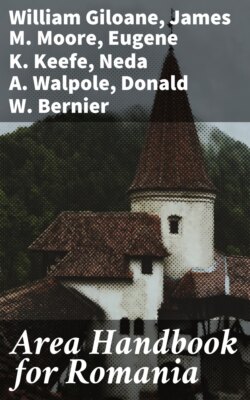Читать книгу Area Handbook for Romania - Eugene K. Keefe - Страница 4
PREFACE
ОглавлениеThe former Kingdom of Romania emerged from the post-World War II chaos as the Romanian People's Republic, a communist satellite so closely aligned to the policies of the Soviet Union that it often appeared to be ruled from Moscow. During the 1950s, however, Romania cautiously began seeking to loosen its ties to Moscow and to assert some measure of autonomy. The widening Sino-Soviet rift of the early 1960s provided an atmosphere of tension among communist states that the Romanians used to their own advantage by remaining neutral in the communist struggle and by seeking greater contacts with noncommunist states. In internal affairs, the Romanian regime maintained a rigid hold on all elements of the society. In 1965 the regime changed the name of the country to the Socialist Republic of Romania and proclaimed that it was well on the way toward communism. In the early 1970s Romania remains a member of the Soviet-led military and economic alliances but has become known as the most independent member.
The changes wrought by the Communists during a quarter century in power are numerous and far reaching. Despite the desires of the Soviet leaders that Romania remain predominantly agricultural, the new Romanian leadership was determined to industrialize. Enforced socialization and concurrent industrialization brought a host of problems in the political, social, and economic life of the country. Reorientation of the society and the political structure was brought about by force when necessary, but the restructuring of the economy within the framework of the avowed Marxist-Leninist ideology proved to be more difficult and led to problems that had still not been overcome by early 1972.
This handbook attempts to describe the social, political, and economic bases of Romanian society and, more particularly, how these bases have been affected by Romania's independent stance within the alliances of Eastern European communist countries. The authors of the handbook have tried to be objective in order to provide a comprehensive exposition of the dominant aspects of Romanian life in the early 1970s. Often hampered by a lack of credible statistical information as well as an overabundance of biased propaganda, the authors have attempted to piece together sufficient factual material to present an accurate appraisal and an indication of observable trends.
English usage follows Webster's Seventh New Collegiate Dictionary. Place names used in the text are those approved by the United States Board on Geographic Names. Tonnages are given in the metric system, but for other measurements standard United States terminology has been used. The use of Romanian words has been held to a minimum and, where used, they have been explained in the text and in the Glossary, which is appended for the reader's convenience. The acronym PCR, derived from Partidul Comunist Roman (Romanian Communist Party), is used throughout the book and is fully explained in the Glossary.
